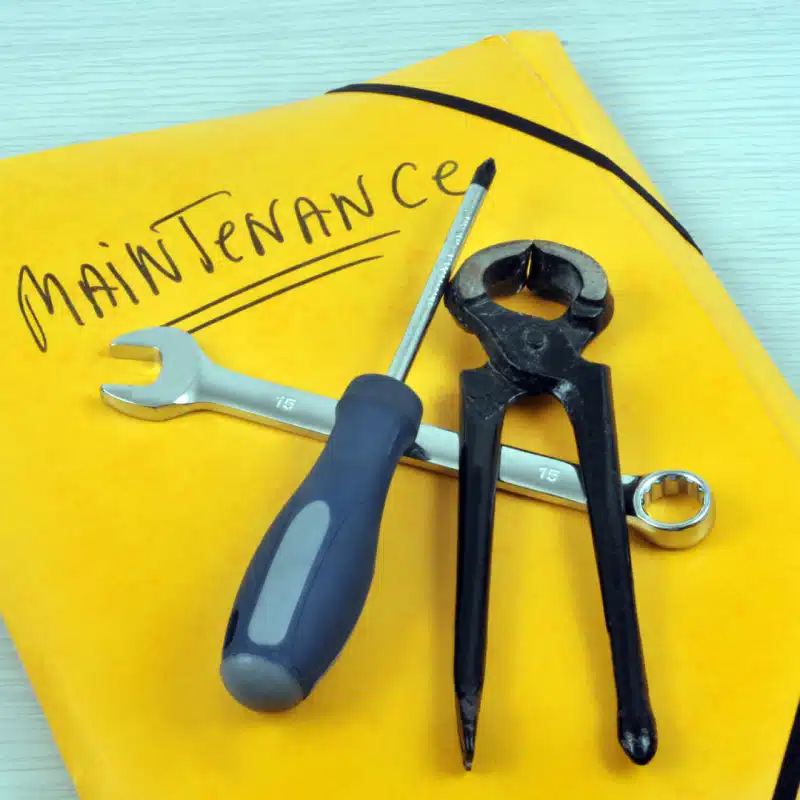Mean Time Between Failures: MTBF Guide and Template
Have you ever wondered how long a repair would take? Or how long it would take you to return to repair the same asset?
Mean Time Between Failures (MTBF) is a metric that helps you predict failures and prepare for repairs, maximising uptime and overall efficiency.

Overview of Mean Time Metrics
In the world of maintenance, failure is inevitable. Understanding how to use event or mean time measurements to plan for failure is critical to minimize its negative impact.
What are the key failure metrics to be aware of?
- MTTR (Mean Time to Repair)
- MTBF (Mean Time Between Failures)
- MTTF (Mean Time to Failure)
In this article, we will discuss how to calculate and use MTBF. However, you will find that using all three will provide you with the most useful data and KPIs (key performance indicators).
Be sure to read our posts on MTTF and MTTR to fully understand their value, how and when to use them and what they mean for your organization.
What is MTBF or Mean Time Between Failures?
Mean Time Between Failures is the average time from the fixing of one equipment failure to the start of the next. Knowing your MTBF gives you an idea of how long a piece of equipment will continue to operate between unplanned failures. This helps you plan for the unexpected.
Why are MTBF measurements important?
Equipment failures are expensive and damaging for an organization. MTBF helps you predict and prepare for failures, enabling fast and effective repairs that minimize the impact of downtime. It is also an important indicator of overall performance. If your MTBF is low, you are experiencing a high frequency of failures. This probably means there are systemic issues that need to be investigated.
What does MTBF mean for your organization?
Manufacturers use mean time between failures as a way to estimate the reliability and failure rate of equipment at different stages of production. It is also commonly used today
- mechanical and electronic system design
- secure plant operations
- product supply
Calculating MTBF does not include planned maintenance, but it helps you to plan inspections for preventive replacements. For example, it is known that an asset will probably run for a certain number of hours before the next failure. If so, initiating preventive maintenance activities such as lubrication or recalibration helps to avoid this failure. Knowing your MTBF helps you save money. It increases total uptime and makes you look good in your business – and who doesn’t want that?
When to measure your mean time to repair?
Use MTBF to start conquering downtime. This is by far its most important application. But MTBF also helps you predict, prevent and prevail over many of your unplanned failures. You will be able to use it for
Asset management, planning and forecasting your inventory of spare parts and maintenance tools
- CAPEX Budgeting
- Planning your maintenance programme
- Demonstration of PM performance
- The quality of the information in your system and how it is used
How is MTBF calculated?
Calculating MTBF doesn’t have to be difficult. As long as you keep track of the total hours your asset has worked and the total number of failures that have occurred, you have everything you need. You even use easy tools like Microsoft Excel to easily find the average time between failures.
Data needed to find your MTBF
To calculate MTBF, you simply measure the total uptime of an asset in a given period and divide it by the number of unplanned failures in the same time period. You will therefore need to track the total uptime for a piece of equipment by simply noting:
- Date and time when an unscheduled failure started
- Date and time when the equipment continues to operate
Note MTBF does not take into account predictive and preventive maintenance. Although these sometimes cause short interruptions, they are not characterised as failures.
A simple MTBF calculation
The equation for MTBF is simple. This equation is the sum of the uptime divided by the number of failures.
Remember to always use the same unit of measure to represent time in these calculations (i.e. always in hours or always in minutes). For example, let’s say you have a generator or generator set that has been running for 750.5 hours (or 750 hours and 30 minutes), but has experienced 4 failures within the same time frame.
When we enter these numbers into our formula, it gives us the following:
MTBF = 750.5 / 4
MTBF = 187,625 hours
How to calculate MTBF using software and other reporting tools
While it is good to know how to measure MTBF manually, it is not practical to plan to do it this way every time. A simple spreadsheet makes it easy to calculate MTBF as long as you note the correct data. But a CMMS software basically does all the work for you.
A CMMS like Repairist records equipment failures throughout the work request process. Downtime and uptime are automatically tracked. As a result, your average time measurements start being calculated as soon as you start using the system. It also creates a dashboard of useful KPIs.
However, if you’re not quite ready to make the switch to CMMS, we’ve created a handy calculator. Download it and see how nice it is to have the work done for you!
Increasing MTBF and improving productivity
For MTBF, the longer the better. There are small things you can do to increase the time between failures. Some of these are the following:
- Do more proactive maintenance. Well-maintained assets are less likely to experience critical failures. Using Repairist you can create monthly maintenance programmes in minutes.
- Use quality spare parts. The cheapest part is not always the best. Make sure you use quality parts that have the durability to keep working longer.
- Use the recommended input material. Whether it is the size of the chicken in a poultry processing system or the thickness of the foil used for product packaging, every machine is designed to operate within certain parameters. Respect these parameters.
- Ensure favourable working conditions. Don’t push machines beyond their limits to make your productivity figures look good. Misusing machines is a sure way to shorten their lifespan and increase the frequency of breakdowns.
- Have a robust recruitment programme for machine operators. Assets should be used according to their design. Improper utilisation will shorten MTBF. Repairist allows the user to record work orders and add detail on how the unit was used during the breakdown, so you can monitor asset utilisation.
- Implement a structured root cause analysis process. Taking the time to understand the true causes of failures will help your team implement effective repairs faster.
- Understand the problems of old equipment and aging assets. Sharing knowledge and tips between maintenance technicians and machine operators helps keep assets in good condition. Repairist keeps a complete maintenance history, asset log and maintenance notes throughout the lifecycle, making it easy for anyone on your team to step in and save the day.
Extract predictions from metrics
Knowing how to calculate and effectively use your event metrics is key to your success as a maintenance team. Especially understanding how to use your MTBF metric to your advantage.
Whether you are just starting out or know your event metrics like the back of your hand, tracking metrics will be time consuming and overwhelming if you don’t have reliable maintenance software. Not to mention that manual calculations leave a lot of room for human error. Let CMMS make your life easier and help you automate your event metrics!

Next Steps
MTBF refers to the average time between failures of a machine or system. This time is used to measure the reliability and performance of the system. It is usually expressed in hours and higher MTBF values indicate more reliable systems.
MTBF is calculated by dividing the total uptime by the total number of failures occurring in a given period. The formula is as follows: MTBF = Total Uptime / Total Number of Failures. This calculation helps you assess the overall reliability of your system.
A high MTBF value indicates that your system will fail less frequently and operate reliably for longer. This reduces maintenance costs, ensures production continuity and increases customer satisfaction.
MTBF refers to the time between failures, while MTTR (Mean Time to Repair After Failure) refers to the average time it takes for a system to repair and return to normal operation after it has failed. Together, they are used to assess the overall reliability and efficiency of a system.
To increase MTBF, implement regular maintenance programs, use quality spare parts and operate your system correctly. You may also consider using data analysis and monitoring systems to detect potential failures in advance. These strategies help prevent failures and increase the overall reliability of your system.














